Comdex 2001 - Day 1: Slow but interesting
by Anand Lal Shimpi on November 13, 2001 4:36 AM EST- Posted in
- Trade Shows
AMD: Continuing to move forward
Although AMD had nothing to publicly show off at Comdex (privately they had some very interesting things). Needless to say that these next few months should hold some long awaited introductions from AMD.
Intel: Driving the Industry
It's not much of a surprise that Intel's 845 chipset does indeed support DDR SDRAM, and it won't be much longer before we see the solution used in motherboards. Although we won't be able to provide you with benchmarks for another few weeks, we have been talking to motherboard manufacturers about their thoughts on the chipset. Most of them agree that it not only outperforms VIA's P4X266 but also SiS' 645 chipset, even when paired with DDR333 SDRAM. As you'll remember from our i845 Motherboard Roundup, the chipset does support both DDR200 and DDR266 SDRAM. Although motherboards based on the solution will undoubtedly be more expensive than their P4X266 or SiS 645 based counterparts, most motherboard manufacturers agree that the stability and quality of the platforms is vastly superior to what they've seen with the 3rd party chipsets.

ASUS' P4B266 is one of many DDR equipped i845 boards that will be on sale soon.
In our review of AMD's Athlon XP 1900+ we made it clear that the performance victory went to AMD at the end of this year. We also mentioned in that article that the 2.2GHz 0.13-micron version of the Pentium 4 would debut in early 2002, thus giving AMD the security of that performance crown throughout the end of this holiday season.
Like AMD, there isn't much we can publicly write about Intel just yet but we did manage to catch a glimpse of something very interesting in Intel's suite. Intel put together a legacy-free motherboard that's an example of the technologies that Intel is actively supporting in the industry.

For starters, this motherboard has a total of 11 USB 2.0 ports (both internal and external). An external DVD-ROM drive was removed from its external housing and installed in a 5.25" bay of a case and connected to one of the internal USB 2.0 ports.
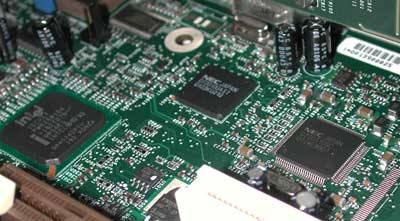
USB 2.0 support is provided by this NEC controller and hub
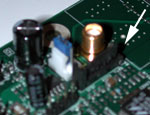 The
board had no IDE connectors, everything was wired for Serial ATA (right: the
white arrow is pointing at a final spec serial ATA board connector. Note how
small it is compared to the capacitors). The hard drive used was a parallel
ATA hard drive with an integrated parallel to serial ATA converter, but eventually
native serial ATA drives will be available.
The
board had no IDE connectors, everything was wired for Serial ATA (right: the
white arrow is pointing at a final spec serial ATA board connector. Note how
small it is compared to the capacitors). The hard drive used was a parallel
ATA hard drive with an integrated parallel to serial ATA converter, but eventually
native serial ATA drives will be available.
Although Intel isn't pushing the standard, the board also featured IEEE-1394 (Firewire) ports for connection to DV cameras. The final component on the board itself was support for 6 channel analog outputs and a wireless Bluetooth transmitter.
The design of the board as an example didn't end there however, a riser card provided support for some of the USB 2.0 ports through a hub on the card as well as 802.11b transmitters. This card also acted as a gateway card, providing an outgoing 10/100 Ethernet port for connection to a hub or switch in order to share an outbound connection with others on the network.
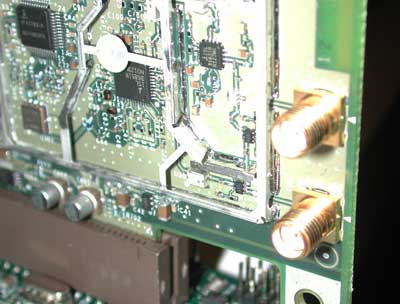
An 802.11b transmitter
Although we won't see a board like this hit the streets anytime soon, it's definitely interesting to think of the possibilities with this type of technology.


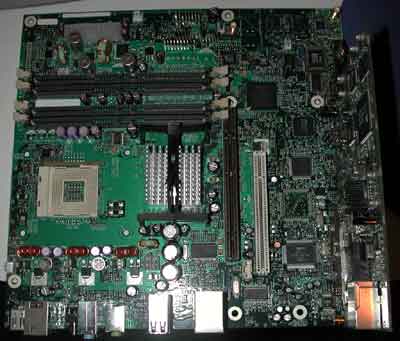
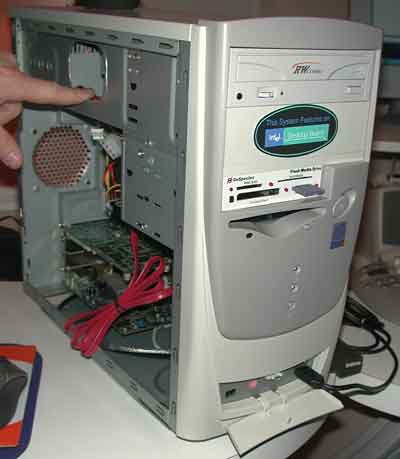








0 Comments
View All Comments